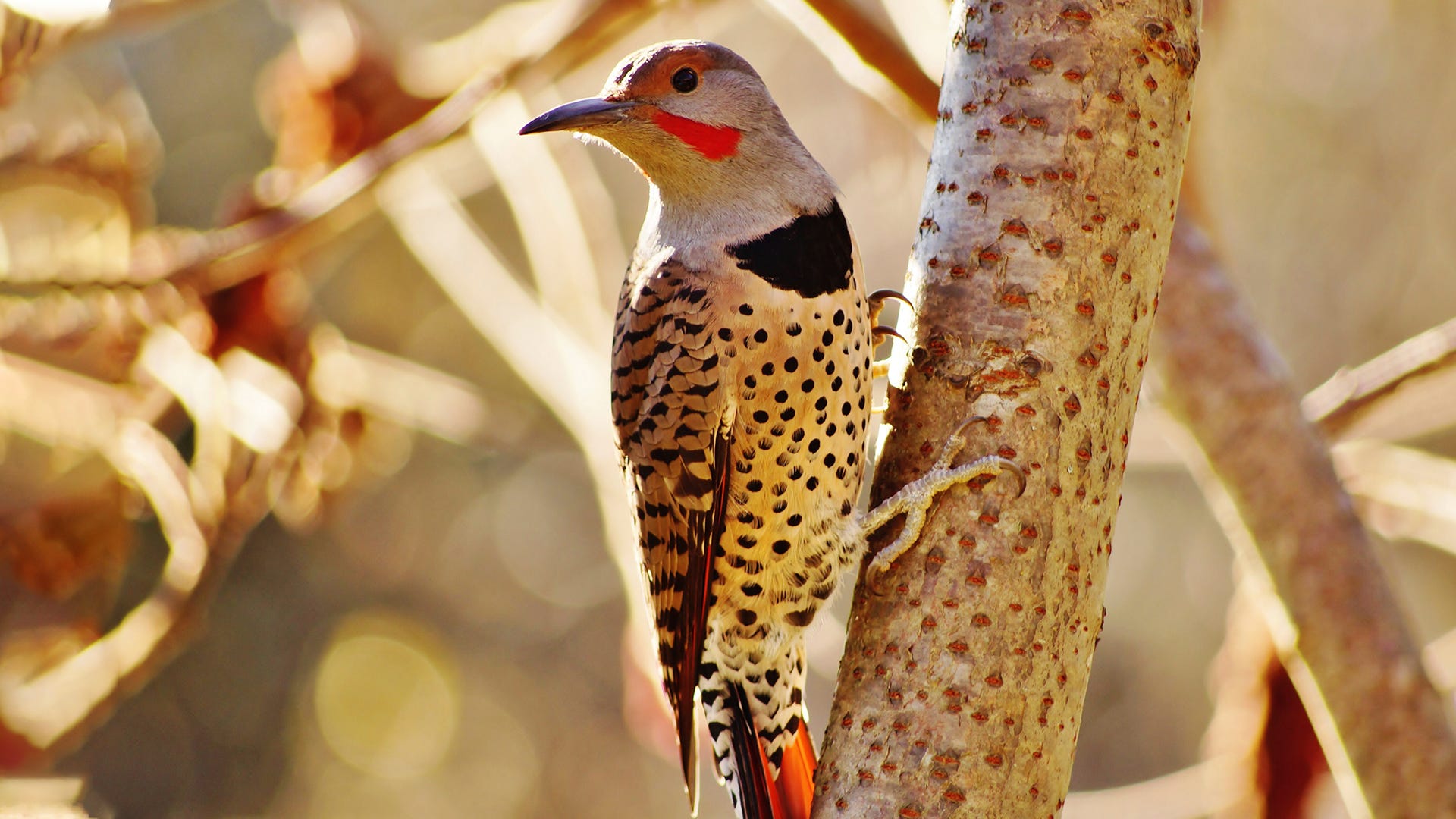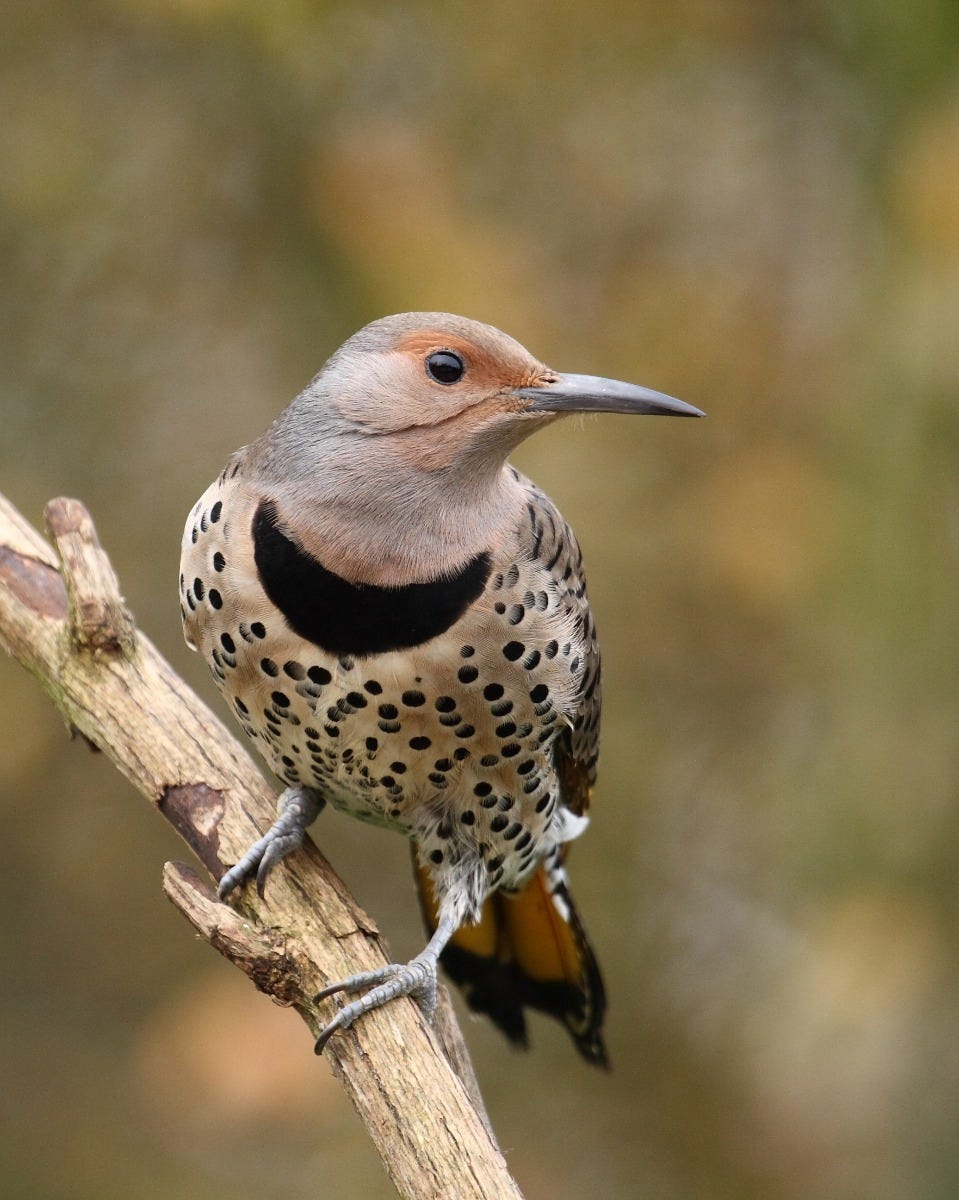
There has been some buzz about a new bird frequenting hummingbird feeders. These birds are almost as big as some feeders, and have a long bill and tongue, similar to a hummingbird. This bird is the flicker and may be visiting a feeder near you!
The Northern Flicker, native to North America and parts of Central America, Cuba, and the Cayman Islands, is a medium-sized member of the woodpecker family. They are one of the few members of the woodpecker family that migrate. Often found in wooded areas, you will see Northern Flickers among the tree line or moving about on the ground. They often feed from the ground because their primary food is insects.
 Although ants can make up about 45% of their diet, Northern Flickers also participate in an activity known as “anting.” Anting is when birds rub insects on their feathers, to assist in preening, in order to avoid harmful parasites. The insects secrete liquids that contain chemicals that act as an insecticide, miticide, fungicide, and bactericide. Anting can also be done to remove the distasteful chemicals and make the insects more appetizing to eat.
Although ants can make up about 45% of their diet, Northern Flickers also participate in an activity known as “anting.” Anting is when birds rub insects on their feathers, to assist in preening, in order to avoid harmful parasites. The insects secrete liquids that contain chemicals that act as an insecticide, miticide, fungicide, and bactericide. Anting can also be done to remove the distasteful chemicals and make the insects more appetizing to eat.
Flickers tend to be cavity nesters, but will take up home in an appropriately sized and situated birdhouse. Both male and female will take part in the building of the nest, which generally is a 2 week process. About 6-8 eggs are laid, and both male and female will incubate the eggs for about 12 days. The young flickers will leave the nest about 25 days after hatching.
Next time you see an interesting bird that isn’t hummer trying to take advantage of sweet nectar, you might be seeing a flicker at your feeder! Offering seed may keep them away from the feeder and allow your hummers to eat in peace. Take pictures of your flicker spotting and post them to our Facebook page!







